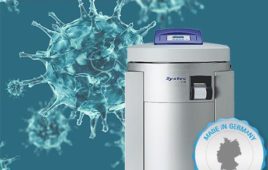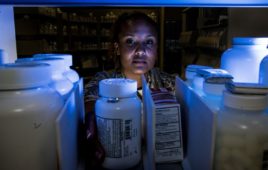Combination devices, which combine the pharmaceutical and medical device areas, are a rapidly growing product market in those industries. The market is expected to reach over $11 billion by 2010, more than double the market in 2004.1 The appeal is a device that targets a drug in the right amount, to the right location in the body, and at the right time. By such localization, total dosages can be smaller, resulting in diminished risk of toxic effects to non-diseased portions of the body. By incorporating the dose in the device rather than mixed or measured at the time of use, mixing and dosing errors can be better controlled. To achieve the social and economic benefits of combination devices, many challenges must be addressed.
LANGUAGE BARRIER
One challenge is that there are always language barriers between disciplines, and the medical device and pharmaceutical fields are not exceptions. The exact meanings of and the exact approaches to contamination and contamination control actually differ somewhat between the pharmaceutical and medical devicearenas.
In pharmaceuticals, cross contamination with incorrect materials are of high priority. The formulation of a drug is analogous to the manufacture of materials of construction (e.g., the plastics, elastomers, and epoxies) of a medical device. Drug manufacturers formulate the product from raw materials. In medical devices, the raw materials are often obtained from outside suppliers, albeit with appropriate certification, and they are then assembled or fabricated into the final device.
Therefore, the “how” of manufacturing is very encoded in pharmaceutical regulations. This leads to such specified practices as independent cross-checking by two individuals of mixing materials and quantities in the manufacture of drugs. For the initial manufacture of medical devices, the cleanliness and sterility of the product surfaces are paramount, prompting the development of standards, such as ISO 10993-17, to determine the risk from leachable substances.2 In pharmaceutical manufacture, the cleanliness and quality of the surfaces of containers and transfer equipment are also paramount. This cleanliness must be validated between each batch. In medical device manufacture, on the otherhand, cleanliness validation refers to the initial set-up of the process.
CLEANING AND STERILIZATION
A second, more technical challenge is the need to both clean and sterilize combination devices. The processes must not compromise the efficacy of either the medical device or the pharmaceutical components. For example, many drugs are heat sensitive and will not survive an autoclave experience. Traditional cleaning agents, whether aqueous or solvent-based, can also present compatibilitychallenges.
One technology that shows promise in both cleaning and sterilization is the use of dense-phase carbon dioxide, either as a liquid or supercritical fluid. CO2 has been developed for critical cleaning applications3 and is also being explored for use in sterilization.4 This may or may not be an ultimate solution; it is one example of a technology with potentially synergistic benefits.
SUCCESS
As with most other advances, the success of combination devices will depend on another combination, the ability to meld what are in some aspects two technological disciplines with different requirements. In some cases, historicalrequirements effectively put the two fields at cross purposes with each other.
References:
- J Sullivan & H Elbaek, Lost in Translation? Combination Products Face Additional Regulatory Hurdles Abroad, Medical Product Out-sourcing, 2007, http://www.mpo-mag.com/articles/2007/04/lost-in-translation.
- B Kanegsberg and E Kanegsberg, Toxicological Risk Assessment For Medical Devices – What is it?, Controlled Environments Magazine, Oct 05.
- B Kanegsberg and E Kanegsberg, Non-chemical Cleaning, Controlled Environments Magazine, Sep 07.
- M Matthews, L Warner, and H Kaiser, Exploring the Feasibility of Using Dense-Phase Carbon Dioxide for Sterilization, Medical Device & Diagnostic Industry, May, 2001, http://www.devicelink.com/mddi/archive/01/05/005.html.
Barbara Kanegsberg and Ed Kanegsberg are independent consultants in critical and precision cleaning, surface preparation, and contamination control. They are the editors of The Handbook for Critical Cleaning, CRC Press. Contact them at BFK Solutions LLC., 310-459-3614; [email protected]; www.bfksolutions.com.



